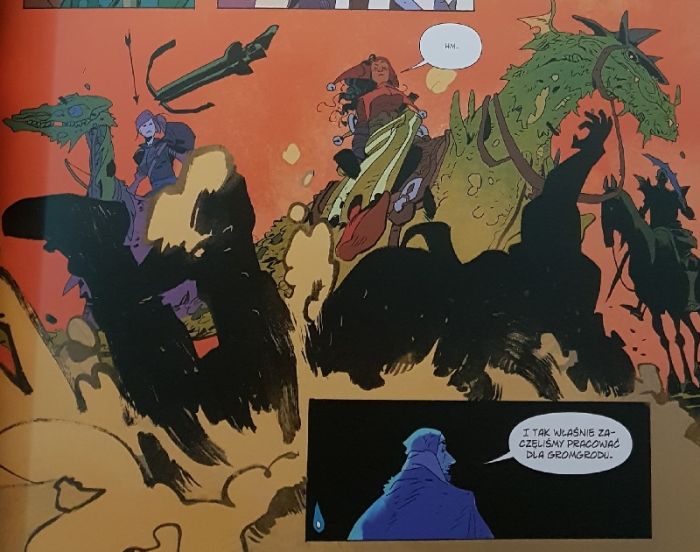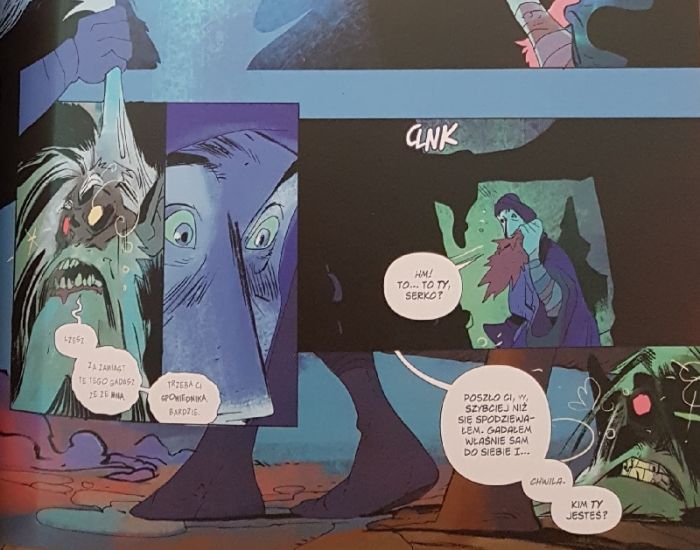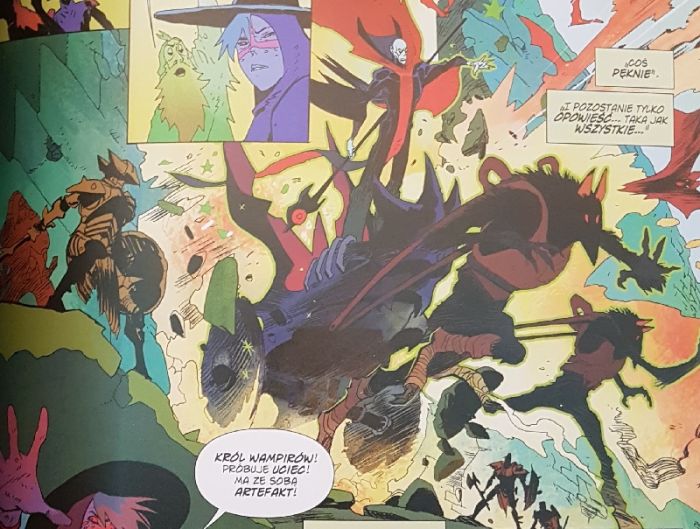The first volume of Cody Simon Spurrier and Matias Bergara aroused great enthusiasm in me. I was bought by world-building where fantasy meets post-apocalypse. The land in which the heroes live has almost completely lost its magic. It is worse that in the second installment of the comic book published by Non-Stop Comics there is less charm.
The main character of the series is Hum – depicted as a bard, although no song comes from his lips. He will do almost anything to accomplish the goal of his mission. And it is to collect the remnants of the magic essence to create a decoction – a mighty potion designed to remove the curse of hatred from his wife, (ber) Serka, a mighty urchin. For this purpose, it was thrown around the world, which made it possible to see the enormity of the destruction caused by the conflict between “Good” and “Evil”. He also ended up in the mighty fortress of humanity, which, however, did not turn out to be a bastion of hope. It was inhabited by fools and villains, which reminded me beautifully of ridiculing archetypes of chivalry from the works of such artists as Andrzej Sapkowski or George RR Martin.

Under the dome of Thundertown
In the second part, the spouses find themselves on the other side of the barricade, in Thundergarden – a city carried on the shoulders of a giant, inhabited by wicked and creatures of darkness. It seems to open up a lot of new doors for playing fantasy trails, but this potential is not used and the story loses its claw. The presented locations and what happens in them no longer have the post-apo chic. The story itself from the pastiche of sword and magic stories focuses more on the relationship between Hum and Serka, which in itself is not bad – after all, fantasy stories rarely (?) Focus on tender marriage relationships. On the one hand, one can observe the bard playing a double game behind his wife’s back to save her soul. On the other hand, the said spouse does not want such rescue and it is more important for her to take revenge on her creator. It is also interesting to watch a couple in fantasy, in which the female representative is stronger and more impulsive than her partner. All this, however, takes place at the expense of other threads and world-creating. Even my favorite, Penticorn, does not play any interesting role this time.
It’s not that creativity is lacking. Spurrier was still able to surprise me with some threads (including the mystery of the Lord of Existence from the giant city). The end of the volume puts the characters in a very interesting place. The problem is that the reader used to deal with postmodern fantasy before – and now only the last part is left of that.

So come on, paint my post-world
What remains unchanged is the line of the Uruguayan artist Matias Berger – this one is still outstanding. The frames are dynamic and full of expression. I must also praise my creativity in filling the world. The five-horned unicorn is a piece of cake on Selki’s mount, which is a baboon with a stroller instead of its hind legs – and there’s more to this just as much imagination. Michael Doig’s colors are once again delightful. The artist did such an excellent job that his name should appear on the cover, next to Spurrier and Bergara. New regions allowed the colorist to expand the palette. The frames are bathed in pastel colors which, despite their warmth, perfectly harmonize with the brutality of the presented world. Both artists responsible for the graphic layer are a great duo, so I hope

Closer to the end
Simon Spurrier planned Coda in three parts. The first was delightful. The second, unfortunately, is not that great anymore – it is still fantasy at a satisfactory level, but unfortunately more clichéd. If the cycle were longer, my expectations would probably be less disappointed. There is only one volume left, although this world deserves more. May Coda Cody (hehe.) Arouse my admiration again.

